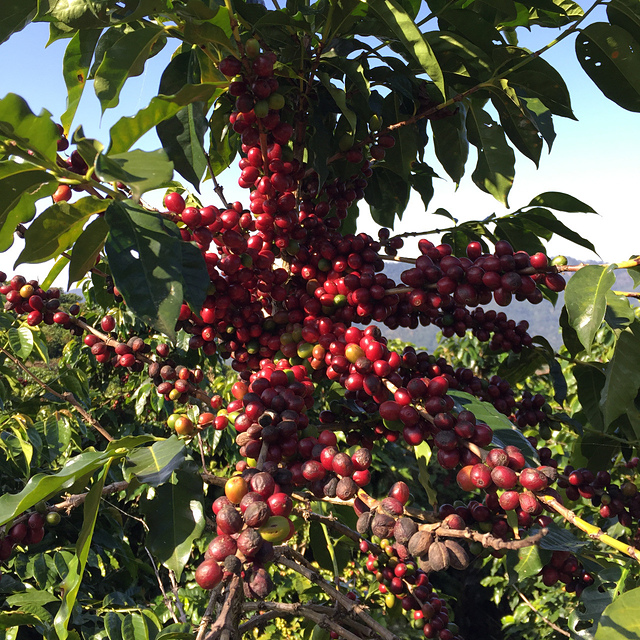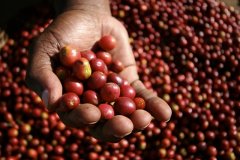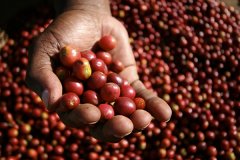Description of flavor and aroma of Ethiopian sun Yega Sheffield G1 Jettip coffee

For professional baristas, please follow the coffee workshop (Wechat official account cafe_style)
Product name: cup test 94 points Ethiopian sun Yega Xuefei G1 Jettip
(Ethiopia Natural Yirgacheffe Gedeb G1)
Flavor description: orange peel and other orange fruit notes, jasmine, lemon sugar, honey
, frankincense, cream chocolate, rich acidity, smooth taste.
Cup test score: 94 points
Adjudicator: Argyle Coffee Roasters
Name of the submitted item: Ethiopia Gedeb Natural
Operators from: Fort Lauderdale, Florida
Products from: Yirgacheffe growing region, southern Ethiopia
Baking degree: Medium-Light
Cup test date: September 2016
Agtron: 58/77
Aroma: 9
Acidity: 9
Body: 8
Flavor: 9
Aftertaste: 9
Country of origin: Ethiopia (Ethiopia)
Producing area: Yirgacheffe (Kochere) producing area
Producer: local coffee farmers in the village of Gedeb
Variety: native species (Heirloom)
Grade: ECX highest level G1
Altitude: 1900 to 2100 m
Treatment: traditional sun treatment
Harvest time: October of each year to February of the following year
Certification: NCMA
Introduction:
Kochere is a small production area located about 25 kilometers southeast of Yegashefi.
Coffee beans come from local coffee farmers and are made up of a large number of small coffee farmers.
The average cultivation area of these small farmers is about 1 hectare, with an altitude of about 1900 to 2, 000 meters.
Coffee varieties are mainly a mixture of Typica and Heirloom (native species). Because of this producing area
It has relatively advanced raw bean water treatment equipment, so it always has a high level of performance in the field of water washing treatment.
It is praised for its clean sweetness with complex flavors of honey and citrus. The main local production mode
Small coffee farmers will harvest red fruits and send them directly to the water washing treatment plant of the neighboring cooperative for unified treatment.
Washing treatment technology was introduced into Ethiopia in the 1970s, and the current production area of Kochere
Water washing is the main treatment of raw beans. After the washing factory screened the graded red cherry color coffee fruit, directly
Peel is washed and fermented. After washing, raw beans with shells are naturally exposed to the sun on the scaffolding. The humidity reaches 12% or less.
Will be sent directly to the Ethiopian Mercantile Exchange (ECX) warehouse in Awassa. Cup test, grading and quantity.
Usually, washed beans are stored in the form of shell beans, which are not carried out until they are exported.
Shell work.
Since the implementation of the ECX system in 2008, most of the raw coffee beans have been sold through competitive bidding.
This batch of sunburn Yega Chuefei G1 Jetep (Gedeb) is located in Yega Xuefei (Yirgacheffe)
Within the Kochere producing area, the village of Jetipu (Gedeb), from Yirgacheffe
60 kilometers to the south, about an hour's drive, belonging to the Gedeo district of southern Ethiopia.
The village of Jetipu (Gedeb) is a very famous coffee boutique bean producing area in Ethiopia. Local coffee
Small farmers harvest red cherries and send them directly to the village processing plant for sale, and the local village of Gedeb
There are many tanning African beds, because the temperature is (15-25 ℃) at high altitude, and the sun treatment needs to be compared.
Dry for a long time. Coffee red fruit comes from 800 local family coffee farmers, who are small farmers.
The average cultivated area of coffee farmers is less than 1 million hectares, and the planting altitude is about 1900 to 2 kilometers above sea level.
Some of its sun-drying beans have sent cup testing records as high as 94 points. The main variety of coffee is Typica.
Mixed with Heirloom (native species). The highest grade of G1 rated by ECX, from the appearance of raw beans,
Consistency, freshness to dry aroma and flavor are all excellent, rich in aroma performance, with
Yejia Xuefei's native characteristics, emitting elegant and charming flower-like perfume, with floral fragrance, bright
Sweet and sour aromas of citrus, lemon, berries and honey. Flavor description: orange peel and other orange
Fruit notes, jasmine, lemon sugar, honey, frankincense, cream chocolate, rich acidity, smooth taste.
Ethiopia is the birthplace of Arabica coffee beans and the country where coffee was first discovered.
Today, there are still many wild coffee varieties in the Kaffa virgin forest. The first one given by Ethiopia
The impression is usually poverty, backwardness and hunger, no history, lack of culture. In fact, if
Instead of being heavily in debt because of the chaos of the war, Ethiopia is actually a civilization with an ancient history.
It's a beautiful country. It has the largest topography of the East African Rift Valley on earth and is the real birthplace of human beings.
It is also the site of the legendary Garden of Eden, which is home to the richest wildlife in East Africa.
And birds, especially in the largest Avash National Park. Ethiopia is one of the few African countries
A country with an ancient traditional history. Every city in Ethiopia has its own story and personality.
Located at an altitude of more than 2400 Michael, the former capital, Addis Ababa, is the meaning of flowers.
Important Notice :
前街咖啡 FrontStreet Coffee has moved to new addredd:
FrontStreet Coffee Address: 315,Donghua East Road,GuangZhou
Tel:020 38364473
- Prev

Description of Coffee Flavor and Flavor of Ethiopian Water-washed Yega Xuefei G1 Conga treatment Plant
Professional baristas exchange please pay attention to the coffee workshop (Wechat official account cafe_style) product name: cup test 93 points Ethiopian water washed Yega Xuefei G1 Conga (Ethiopia Washed Yirgacheffe Konga G1) flavor description: lemon, orange, red apple, honey, smooth and sweet taste, clear acidity, fruit floral flavor, long-lasting aftertaste. Cup
- Next

Red Cherry Plan Ethiopian Sun Yega Xuefei G3 Qiuba Village Coffee Flavor Taste
For the exchange of professional baristas, please follow the coffee workshop (Wechat official account cafe_style) Product name: red Cherry Project Ethiopia Solar Yegashefi G3 Ethiopia Natural Yirgacheffe Chelba OCR G3 country: Ethiopia (Ethiopia) production area: Yega Xuefei (Yirgacheffe) producer: mound treatment Plant (Chelb)
Related
- Detailed explanation of Jadeite planting Land in Panamanian Jadeite Manor introduction to the grading system of Jadeite competitive bidding, Red bid, Green bid and Rose Summer
- Story of Coffee planting in Brenka region of Costa Rica Stonehenge Manor anaerobic heavy honey treatment of flavor mouth
- What's on the barrel of Blue Mountain Coffee beans?
- Can American coffee also pull flowers? How to use hot American style to pull out a good-looking pattern?
- Can you make a cold extract with coffee beans? What is the right proportion for cold-extracted coffee formula?
- Indonesian PWN Gold Mandrine Coffee Origin Features Flavor How to Chong? Mandolin coffee is American.
- A brief introduction to the flavor characteristics of Brazilian yellow bourbon coffee beans
- What is the effect of different water quality on the flavor of cold-extracted coffee? What kind of water is best for brewing coffee?
- Why do you think of Rose Summer whenever you mention Panamanian coffee?
- Introduction to the characteristics of authentic blue mountain coffee bean producing areas? What is the CIB Coffee Authority in Jamaica?

